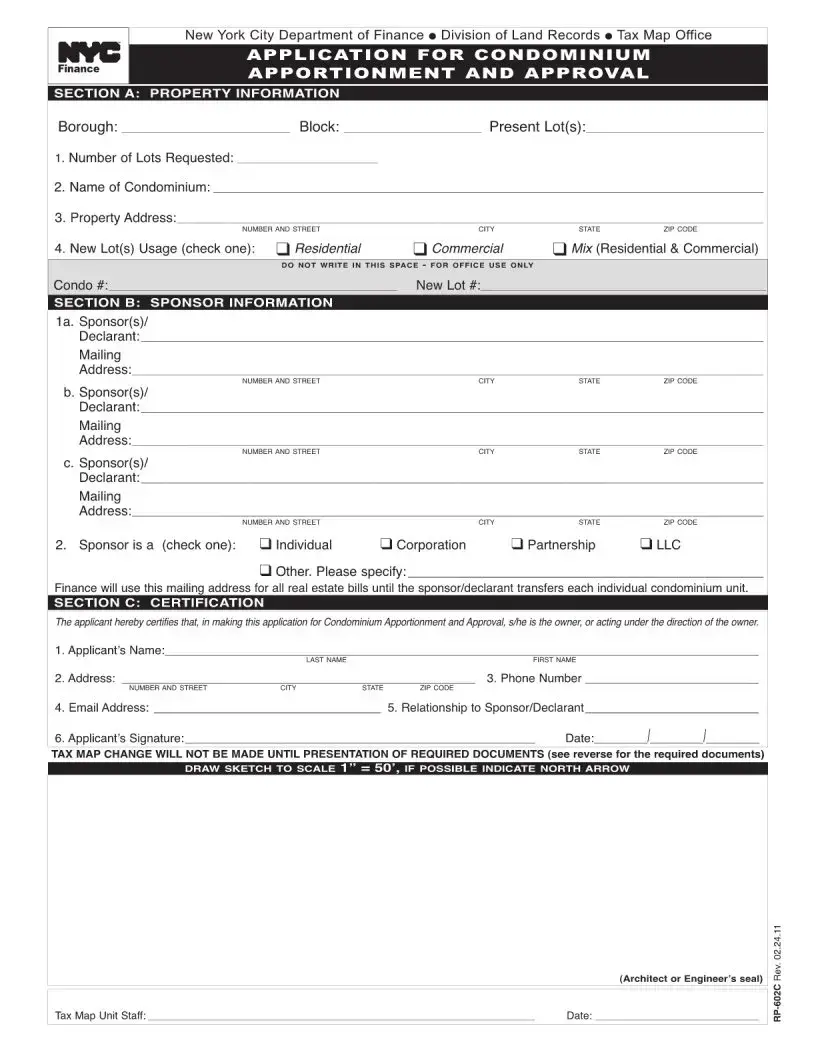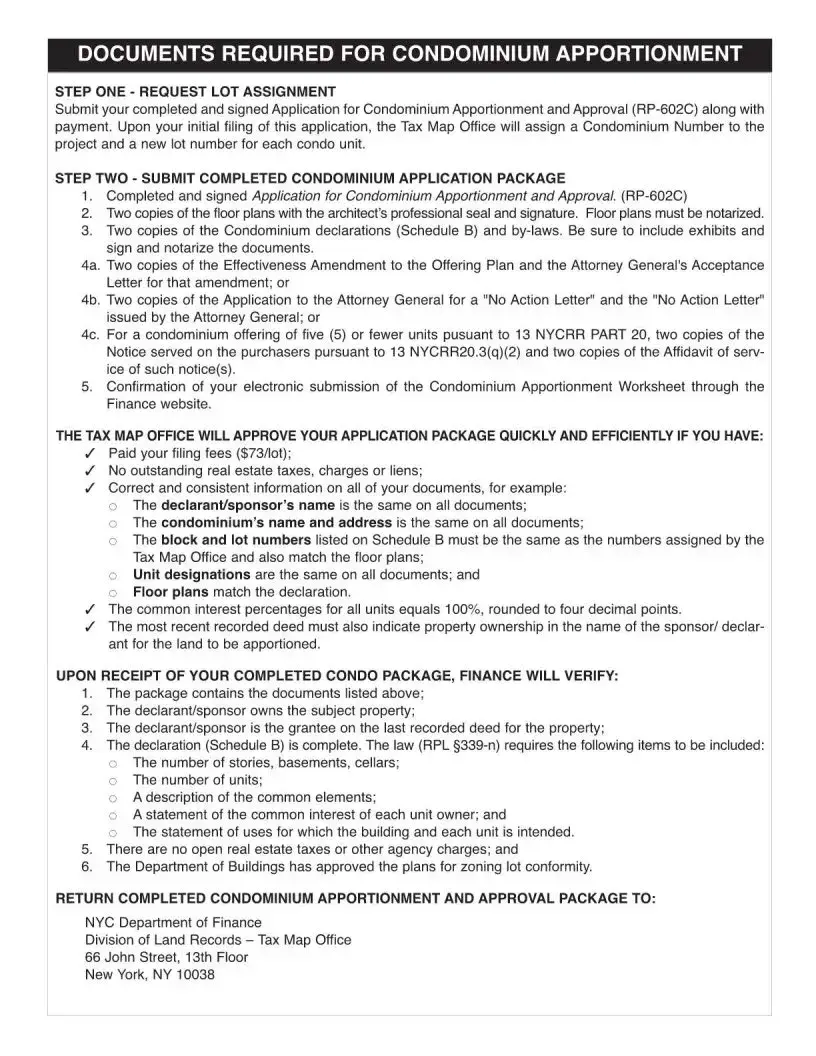Nyc Rp 602C: Usage Guidelines
Filling out the NYC RP-602C form is a crucial step for individuals seeking certain property-related benefits in New York City. This procedure, while straightforward, requires attention to detail to ensure all provided information is accurate and complete. Doing so ensures that the application process progresses smoothly, minimizing delays. Once this form is correctly filled out and submitted, it will be reviewed by the appropriate city department, which will then determine eligibility for the sought-after benefits. It is vital for individuals to follow each step carefully to avoid common mistakes that can lead to unnecessary complications.
- Begin by entering the current date in the specified format at the top of the form.
- In the section labeled "Applicant Information," fill in your full name (last, first, middle initial), ensuring it matches the name on your property deed.
- Provide your complete property address in the "Property Information" section. This includes the street address, borough, block, lot, and any apartment or unit number.
- Answer the ownership and residency questions in the following section. Check the appropriate box to indicate whether you own the property and if it is your primary residence.
- Under "Contact Information," list your primary phone number, an alternate phone number if available, and your email address. Ensure these are current as they will be used for any necessary communication regarding your application.
- For the section on property designation, indicate the type of property (e.g., single-family home, condominium, cooperative apartment) by checking the appropriate box.
- If applicable, complete the area concerning co-op or condo management company details, including the company name, address, and contact information.
- Review the form for accuracy. Before signing, double-check all entered information for completeness and correctness. This includes verifying the accuracy of dates, names, property details, and contact information.
- Sign and date the form in the designated area at the bottom of the page. If you are completing this form on behalf of a corporation or partnership, include your title or position next to your signature.
- Prepare any required supporting documentation specified in the form instructions. This may include proof of residence, ownership documents, or other legal forms that verify the information provided in your application.
- Submit the completed form and all supporting documents to the address provided in the form instructions. Ensure that your submission meets any specified deadlines to retain eligibility for the benefits.
Upon submission, the form undergoes a review process, whereby the information provided is verified and assessed for eligibility. Applicants should be prepared for possible follow-up inquiries or requests for additional information. Timely and responsive communication during this review phase is essential for a favorable outcome. Successfully navigating this process is the first step toward securing the benefits associated with the NYC RP-602C form.

